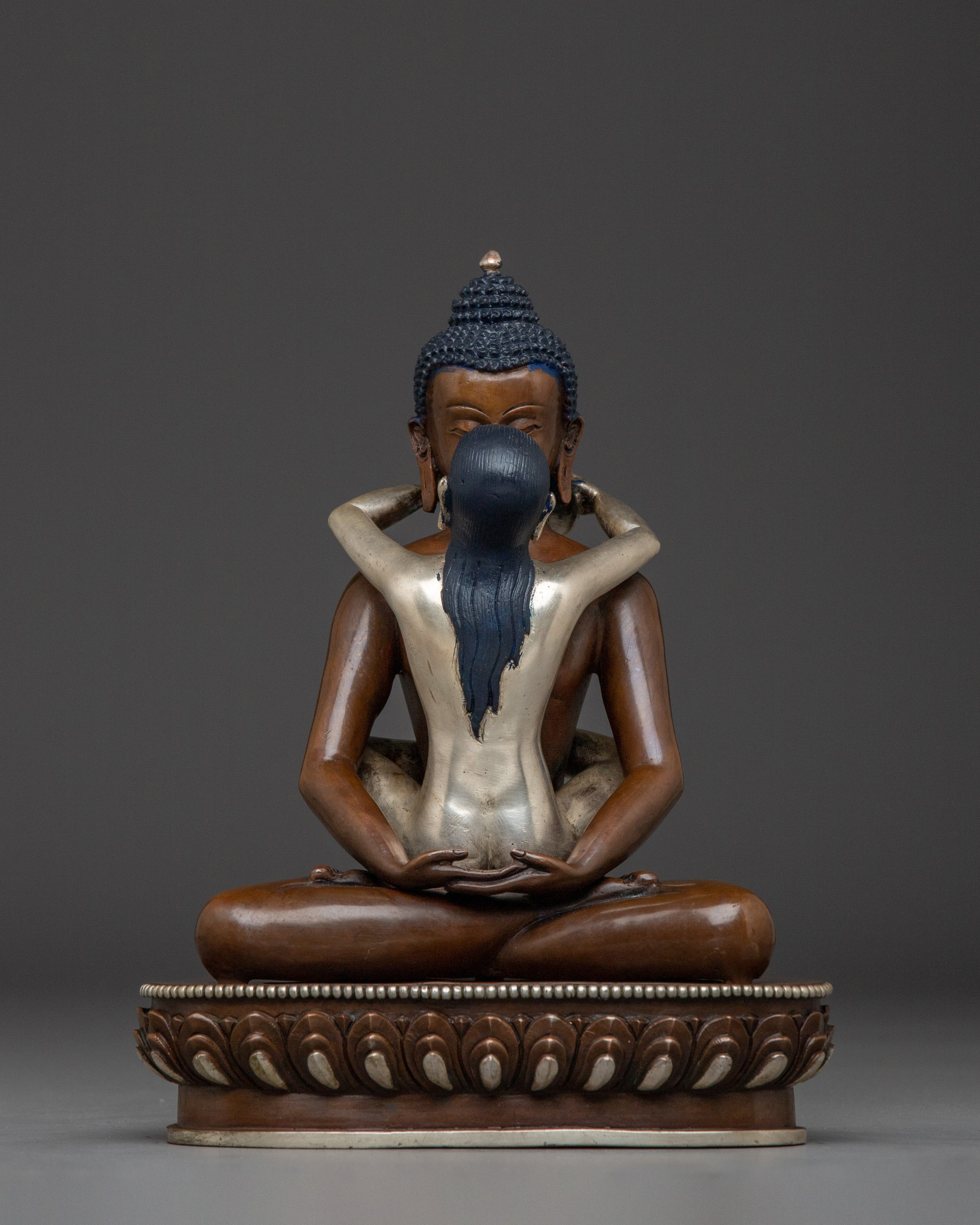Description
Traditional Union of Samantabhadra with consort | Enlightened Practice and Vows
Union of Samantabhadra with consort stands 8.7 inches (22 cm) tall with a base measuring 6.9 inches (17.5 cm), weighing 2.31 kg. Crafted from oxidized copper and silver plated, this piece reflects both timeless durability and elegant craftsmanship. Dorje Phangmo, a fierce tantric deity in Tibetan Buddhism, is revered for her protective and transformative powers. This handcrafted statue from Nepal serves as a meaningful spiritual artifact and a stunning decorative centerpiece for any altar or sacred space.
Samantabhadra is portrayed with a serene, unwavering expression that reflects the boundless clarity of primordial awareness. A prominent ushnisha—symbolizing spiritual perfection and enlightenment—crowns his head, emphasizing his status as the primordial Buddha beyond time and form. He sits firmly in the vajra posture (full lotus), representing unshakable stability and the indivisible nature of wisdom and compassion. In his gesture of dhyāna mudrā (meditative absorption), he rests his hands in his lap, yet simultaneously cradles his consort, who sits in intimate union before him. This unique posture powerfully symbolizes the inseparability of insight and skillful means, a central tenet in Vajrayana thought. Unlike wrathful deities, Samantabhadra and his consort appear in peaceful, naked forms, signifying the nakedness of ultimate truth—pure awareness, untouched by conceptual elaboration. Their union expresses the awakened state, free from duality, radiating the timeless essence of the Great Perfection (Dzogchen).
Size: 8.7”/22cm (Height) x 6.9”/17.5cm (Base)
Weight: 2.31 kg
Material: Oxidized Copper Body, Silver Plated
Samantabhadra, known as the "Universal Worthy," is a primordial Buddha in Mahayana and Vajrayana Buddhism who embodies the ultimate nature of mind, pure, boundless awareness. He represents the dharmakāya, the "truth body," which is the unconditioned, formless essence of enlightenment beyond birth and death. In the Dzogchen tradition of Tibetan Buddhism, Samantabhadra is not a historical figure but the expression of original, innate Buddhahood—ever-present, unchanging, and free from dualistic perception. He symbolizes the unity of emptiness and luminous clarity, the foundational ground of all experience and awakening.

